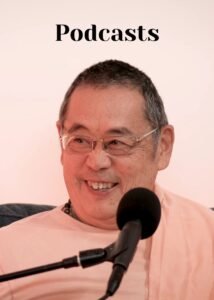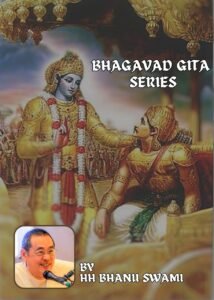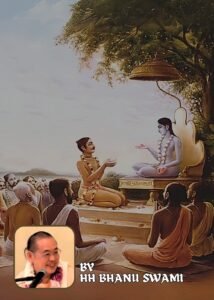Sri Caitanya Caritamrita – Madhya Lila – 13.24 | HH Bhanu Swami Maharaj | ISKCON Chennai | June 27, 2025 |
Om Namo Bhagavate Vāsudevāya
Om Namo Bhagavate Vāsudevāya
Om Namo Bhagavate Vāsudevāya
nama om vishnu-padaya krishna-preshthaya bhu-tale
srimate bhaktivedanta-svamin iti namine
namas te sarasvate deve gaura-vani-pracharine
nirvishesha-shunyavadi-pashchatya-desha-tarine
jaya sri-krishna-chaitanya
prabhu nityananda
sri-adwaita gadadhara
shrivasadi-gaura-bhakta-vrinda
Hare Krishna Hare Krishna Krishna Krishna Hare Hare
Hare Rama Hare Rama Rama Rama Hare Hare
Reading from Sri Caitanya Caritamrta Madhya Lila Chapter 13 Verse 24.
CC Madhya 13.24
তাঁহার সম্মতি লঞা ভক্তে সুখ দিতে ।
রথে চড়ি’ বাহির হৈল বিহার করিতে ॥ ২৪ ॥
tāṅhāra sammati lañā bhakte sukha dite
rathe caḍi’ bāhira haila vihāra karate
Synonyms
tāṅhāra sammati — her permission; lañā — taking; bhakte — the devotees; sukha dite — to please; rathe caḍi’ — riding on the car; bāhira haila — came out; vihāra karite — to perform pastimes.
Translation
Having taken permission from the goddess of fortune, the Lord came out to ride on the Ratha car and perform His pastimes for the pleasure of the devotees.
Purport
In this connection, Śrīla Bhaktisiddhānta Sarasvatī Ṭhākura comments that as an ideal husband, Lord Jagannātha remained fifteen days in a secluded place with His wife, the supreme goddess of fortune. Nonetheless, the Lord wanted to come out of seclusion to give happiness to His devotees. The Lord enjoys Himself in two ways, known as svakīya and parakīya. The Lord’s conjugal love in the svakīya-rasa relates to the regulative principles observed in Dvārakā, where the Lord has many married queens. But in Vṛndāvana the conjugal love of the Lord is not with His married wives but with His girlfriends, the gopīs. Conjugal love with the gopīs is called parakīya-rasa. Lord Jagannātha leaves the secluded place where He enjoys the company of the supreme goddess of fortune in svakīya-rasa, and He goes to Vṛndāvana, where He enjoys the parakīya-rasa. Bhaktisiddhānta Sarasvatī Ṭhākura therefore reminds us that the Lord’s pleasure in parakīya-rasa is superior to His pleasure in svakīya-rasa.
In the material world, parakīya-rasa, or loving affairs with unmarried girlfriends, is the most degraded relationship, but in the spiritual world this type of loving affair is considered the supreme enjoyment. In the material world everything is but a reflection of the spiritual world, and that reflection is perverted. We cannot understand the affairs of the spiritual world on the basis of our experience in the material world. The Lord’s pastimes with the gopīs are therefore misunderstood by mundane scholars and word-wranglers. The parakīya-rasa of the spiritual world should not be discussed except by one who is very advanced in pure devotional service. The parakīya-rasa in the spiritual world and that in the material world are not comparable. The former is like gold, and the latter is like iron. Because the difference between the two is so great, they cannot actually be compared. However, just as a knowledgeable person can easily distinguish gold from iron, one who has the proper realization can easily distinguish the transcendental activities of the spiritual world from material activities.
HH Bhanu Swami Maharaj:
So this is the beginning of the description of the Ratha Yatra. So superficially, Lord Jagannath goes into seclusion and gets repainted after this Snana yatra. Then he again appears and he goes on the Ratha Yatra and stays at the Gundicha temple for about a week. And then he returns. So of course, we accept Lord Jagannath as Krishna. And He is with Balarama and Subhadra. So of course, there is no Subhadra in Vrindavan, only in Dvaraka. So therefore, the worship of Jagannath, Baladeva and Subhadra is a worship of Krishna in Dvaraka. And of course, it is still Krishna, so therefore, this is Bhagavan Krishna manifesting his wonderful qualities, superior to any other form. At the same time, we also know that this form is called Purna and the form in Vrindavan is called Purnatama, most complete.
We also know that Caitanya Mahaprabhu is non-different from Krishna. And so he’s called Avatari, the source of all other forms of the Lord. We also know that Caitanya Mahaprabhu is Krishna, but he has the mood of Radha. So in the mood of Radha, he worships Krishna. So he worships Krishna in Vrindavan. So therefore, Lord Caitanya’s mood is also related to the Vrindavan mood. And this is very nicely expressed in many of his pastimes, especially in Navadvipa.
And in fact, it is said that just as the Rasalila is the most spectacular manifestation in Vrindavan, so the Sankirtana pastimes are the greatest manifestation in Navadvipa. From material eyes, doing Sankirtana in Navadvipa and Rasalila in Vrindavan look very different. But we also know that Kirtan itself is non-different from Krishna’s pastimes. And if Caitanya Mahaprabhu is participating in the Kirtan, then it is obviously non-different from Krishna’s pastimes in Vrindavan. And of course, Lord Caitanya is in the mood of Radha. But Caitanya Mahaprabhu left Navadvipa just as Krishna left Vrindavan.
Lord Caitanya took Sannyasa, then he went to Puri, then he travelled for about four years, then he went back and stayed the rest of his life in Puri. One would expect that Lord Caitanya would stay in a place like Vrindavan, where there is Radha and Krishna everywhere. But he chose to stay in Puri, because of course it was close to Navadvipa, but the Deity was a Dvaraka form of Krishna. So why would Lord Caitanya choose a place where we have a Dvaraka form? So we see in the pastimes of Lord Caitanya in Puri, that when he saw that Jagannath form, he actually was appreciating Krishna in Vrindavan.
So that is not unusual or surprising, because Krishna is absolute. And though Krishna is called Purna in Dvaraka and Purnatama in Vrindavan, if one sees the Dvaraka form of Krishna in a different way, one can see the Vrindavan Krishna there. Just as when the inhabitants of Vrindavan, including the Gopis, went to Kurukshetra, they saw the Dvaraka Krishna, they did not see him as a Dvaraka Krishna, they saw him as a Vrindavan Krishna. So, it was possible for Caitanya Mahaprabhu to see this form of Jagannath as a Vrindavan Krishna. On the other hand, we also know that Caitanya Mahaprabhu had the mood of Radha. So Radha will always see that form of Vrindavan Krishna and nothing else.
So in Bhagavatam, it is explained that the people of Vrindavan, including the Gopis, they met Krishna in Kurukshetra. And Krishna could not go back to Vrindavan, so he invited the people of Vrindavan to come to Dvaraka. But they refused. And they went back to Vrindavan. And the reason is that Dvaraka was quite a different place, so the setting was very different from Vrindavan. So being surrounded by all the people of Dvaraka in a different mood, would be very disturbing for them. So they instead requested Krishna to come back to Vrindavan.
Of course, at that time Krishna could not go, because there were many demons that he had to annihilate. But he promised to come back. Of course, he promised before also. So sometimes the Gopis in anger would say, what is the use of Krishna’s promises? We can never believe Him. Nevertheless, they went back to Vrindavan and they were hoping and hoping for Krishna to come back, because this is love in separation. And in separation, the feelings of that love become more intense. So that was the mood of Lord Caitanya in Puri. With the mood of Radha, his love for Krishna became most intense. Of course, we know that Radha is the highest Gopi and in any case, she has the most intense love. But Radha in separation from Krishna gives rise to the most astonishing Sattvika bhavas.
Similarly Lord Caitanya, in the mood of Radha in Puri, he also experienced extreme symptoms due to separation. And although that separation externally looks like some sort of lamentation and grief, actually it’s also the highest bliss. It is not understood by people of this material world. Lord Caitanya’s mission was to show how the love of Radha and Krishna is the most exalted. And in Puri, he did this by manifesting these most astonishing symptoms. But just as normal people cannot understand the ecstatic symptoms of Radha, they could also not understand the ecstatic symptoms of Caitanya Mahaprabhu. Nevertheless, those who are devotees could appreciate this example of Caitanya Mahaprabhu.
So as explained in the purport, Caitanya Mahaprabhu, having the mood of Radha, has this mood of Parakiya rasa. Of course, Krishna married queens of Dvaraka, that was Svakiya rasa. Even that Svakiya rasa and Madhurya rasa is very intense. And in the Svakiya rasa, there’s also separation which is very intense. But the separation in Parakiya rasa in Vrindavan is even more intense. And it’s most intense, it’s also the highest bliss. And for that reason, we celebrate the love of Radha and Krishna as the highest bliss. And in that highest bliss, the separation or Vipralambha is the highest, highest, highest.
So Caitanya Mahaprabhu in Puri then exhibited this highest type of bliss. As I said, Krishna promised to come back, but he didn’t. But it’s also explained, he finally did go back. Because he should fulfill his promise to the highest devotees. So after killing Dantavakra near the gate of Mathura, he returned. Of course, it’s also explained, that was much later, but he returned earlier also, in another form. So after several months of living in Mathura, he actually did return, but we don’t see that type of return in the external pastimes. So, when there is separation, then the Gopis long for Krishna to return.
So, Caitanya Mahaprabhu, when he saw this Ratha Yatra, Jagannath going out on a Ratha Yatra, he took this as the people of Vrindavan, particularly the Gopis, making Krishna return to Vrindavan. So that separation is concluded with meeting again. And this also gives rise to great bliss. And it also gives rise to great ecstatic symptoms. So we see in the Ratha Yatra pastime, when the cart was moving, Lord Caitanya exhibited the most extraordinary symptoms. He would jump very high. He would fall on the ground. He would perspire, but the perspiration shot out very forcefully, like from water guns. And sometimes, instead of perspiration, blood flowed out of his pores. And tears flowed from his eyes, and his voice choked up. So all these are extreme symptoms of great bliss. So in this way, Caitanya Mahaprabhu exhibited the mood of Radha in separation and in union.
So people of the material world cannot understand this. They cannot understand about parakiya rasa. They cannot understand how separation is even more blissful than meeting. They cannot understand how Caitanya Mahaprabhu is non-different from Krishna. So of course, Caitanya Mahaprabhu came to this world to give some understanding of the love of Radha and Krishna. Of course, through his activities, this may still be difficult to understand So, we also have the explanation of our Acharyas.
Caitanya Mahaprabhu ordered the Gosvamis to begin to explain all of this. So thus, we have commentaries on Bhagavatam and other works, which will explain the real nature of spiritual parakiya rasa. They explain the difference between material rasa and spiritual rasa. And they also explain about separation and meeting. So, this combination of Caitanya Mahaprabhu’s pastimes, plus explanation of our Acharyas, allows us to get some understanding of the position of Madhurya rasa, parakiya rasa and Vipralambha. And if we don’t follow their explanations, then we are bound to make a lot of mistakes.
Hare Krsna!
Q & A :
1.) Maharaj, in the beginning of the class, you were explaining that Krishna is a source for all avataras. So my question is that, see, all the forms are same. Same means, that in Tattva, all are one. How can we say that Krishna is a source?
So, of course, all the forms of the Lord are one and they’re all eternal. So there’s no creation. In the Nectar of Devotion, it is explained that one of the qualities of Vishnu is, he is the seed of all the avatars. And this distinguishes him from Shiva or Jivas. So, when the forms manifest in the material world, they manifest through Mahavishnu, Garbhodakshay Vishnu. But at the same time, he’s the seed of the avatars, but they’re also eternal [Laughs]. So sometimes, when we speak of being the source, etc., we’re not speaking of a time when there was nothing and then something was created. When we speak about the birth of Krishna, but it’s not a real birth, because he’s eternal [Laughs]. Therefore, this idea about when we speak about the creation or whatever, sometimes it’s metaphorical. So we say that Mahavishnu gives rise to Garbhodakshay Vishnu, gives rise to Kshirodakshay Vishnu, but they’re all eternal. But then, this Mahavishnu is actually arising from a form in the spiritual world. So, spiritual world is superior to the border of the material world of Mahavishnu and then the material world, etc. But in the spiritual world, all the forms are there. All the avatar forms are also there. And there’s no creation of the spiritual world. So we can’t call them avatars there, because they’re in the spiritual world eternally [Laughs].
We say, Krishna is sarva karana karanam. So how is he, the cause of everything in the spiritual world when everything is eternal? So therefore, we don’t take cause as literal cause. Yet, we distinguish Krishna from all the other forms. So we distinguish because we say that Krishna has more manifestation of qualities and powers than the others. But if they’re all one, they should all have all the powers and all the qualities, yes? So that is true. They are one, so they have all the powers, all the qualities. However, in their particular forms, they do not manifest all the qualities. So Ramachandra does not manifest the same qualities as Narishamadeva or Vishnu. They’re slightly different. So they have all the qualities, but in that particular form, they don’t manifest them in their pastimes. So Krishna is distinguished from the other forms because, though everybody has all the qualities, Krishna manifests all the qualities of all the other forms, plus a few extra qualities, they don’t manifest. So they’re also all causes of everything in the material world, etc. But Krishna is the most perfect form of the cause [Laughs]. So he’s the cause of all causes.
2.) Maharaj, we know that Jagannath form is Dwarka form, Dwarka Krishna. And in Dwarka, normally Aishwarya is more prominent than the sweetness. So we are in a Gaudiya Parampara. Normally our expectation is that we want more sweetness than the Aishwarya. So but when we see the form of the Jagannath in Dwarka, it is not that in Vrindavan. So how, as a Sadhaka see that Jagannath form is not different from Krishna in Vrindavan ?
So of course the form in Dwarka is still Krishna and though there is Aishwarya manifested still, some sweetness is there more than we’ll see in Vishnu forms or Rama. But Caitanya Mahaprabhu when he would see Jagannath, he would not see a Dwarka form [Laughs]. So he may see Vrindavan form or Krishna separated from Vrindavan and longing to go back to Vrindavan. So in Brihad Bhagavatamrta, Sanatana Goswami describes how Krishna in Vrindavan is there, but actually he is not there, because he is always in separation from Vrindavan. So therefore, the devotees can see Jagannath as a form of Krishna in separation.
3.) It is said love in separation is higher than love in union. However, it appears that the intensity increases more in union after separation or vice versa. So, how to understand this Maharaj ?
So of course, from external appearances, once the lovers unite and join or meet together, there should be more bliss. That’s normal logic. After separation, yes there is meeting. And there is always bliss.
So how is it that, the experience in separation gives rise to more bliss? It actually looks like suffering. However, we find that, the statements of scripture say the opposite that, in that separation that looks like lamentation, there is a higher bliss than that of meeting. How that is possible? It is explained that you cannot understand until you experience it. So in Brihad Bhagavatamrta, there it says, you can ask Radha. But even if she answers, you still may not understand [Laughs].
Devotees: Grantharaj Srimad Bhagavtam Ki.. Jai!! HH Bhanu Swami Maharaj Ki.. Jai !!


